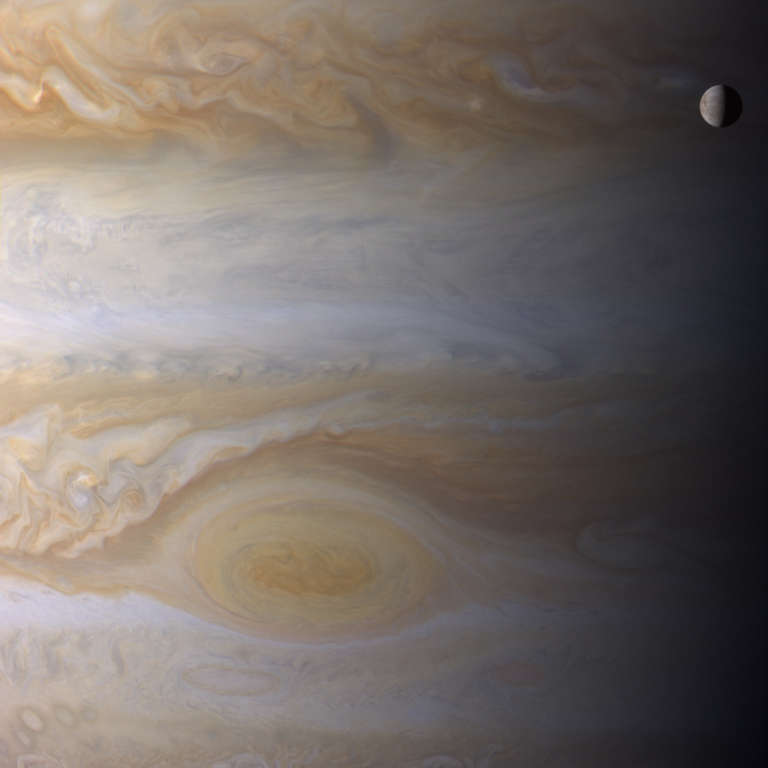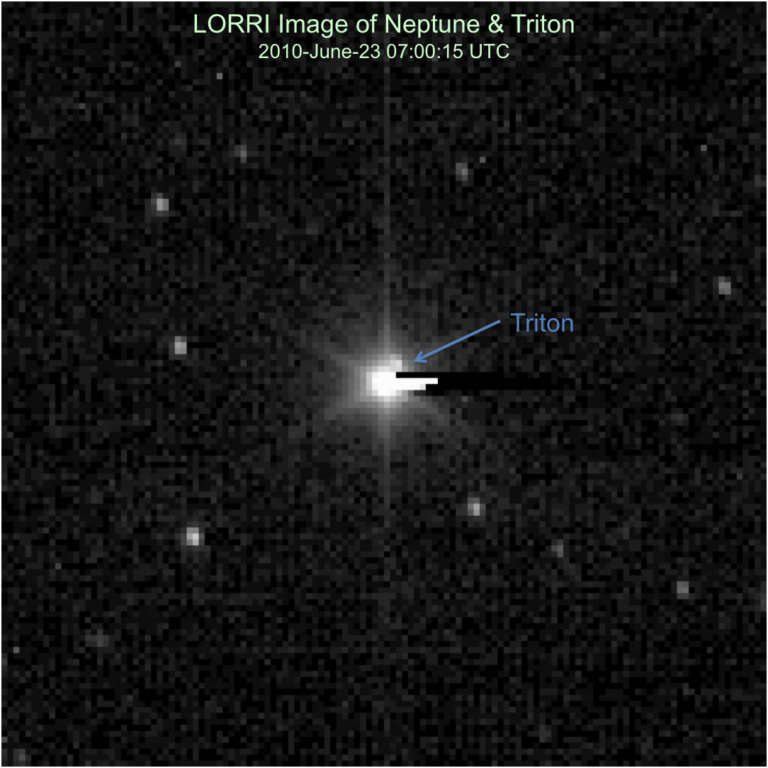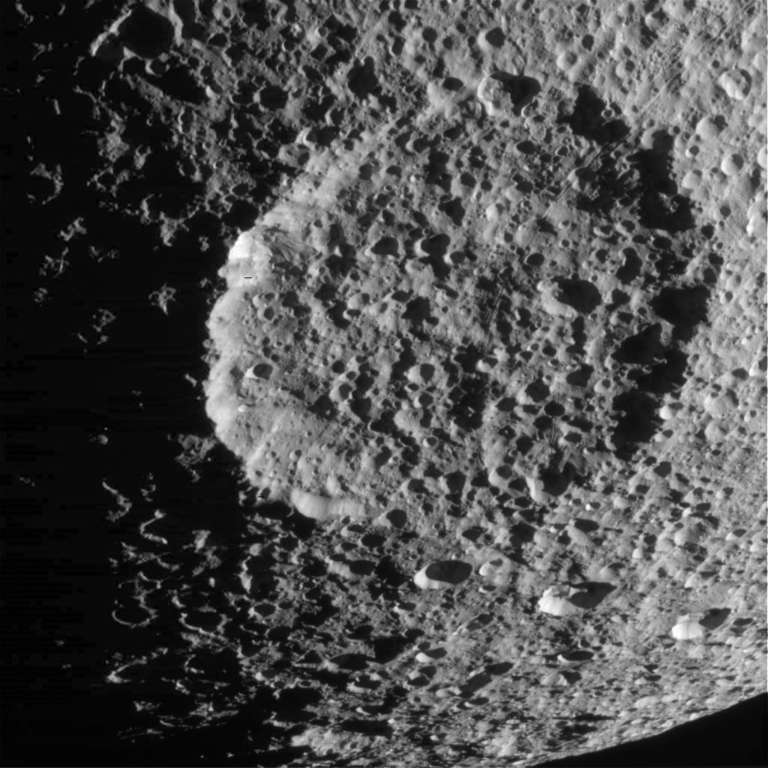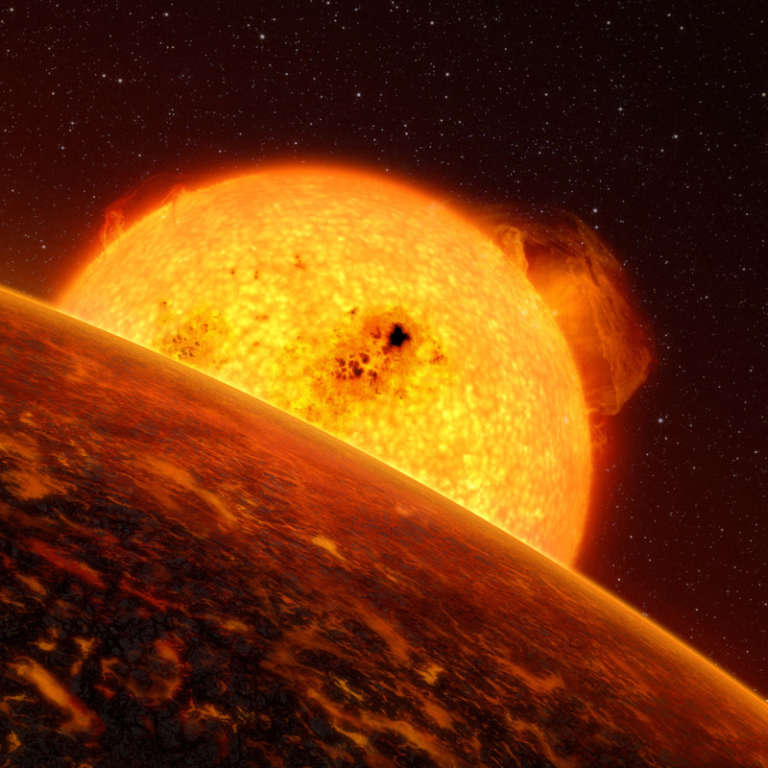All
All
Stories, updates, insights, and original analysis from The Planetary Society.
Pretty picture: Three moons of Saturn
The Cassini Raw Images Website always offers rewards to the browser. This evening I found the raw images necessary to create this color composite, showing the hazy orange moon Titan, the mid-sized icy moon Dione, and the tiny rock Prometheus all at the same time.
An update to the Cassini Tour Page
Where's the Cassini Saturn orbiter going to be in the next week -- or hundred weeks? It's all already planned out.
DPS 2010: Pluto and Charon opposition surges, Nix and Hydra masses, Pluto and Eris compositions
An awful lot of the talks in the Pluto session on Tuesday morning, October 5, at the Division of Planetary Sciences meeting spent more time focusing on how bad weather conditions were during the astronomers' attempts to view Pluto as it occulted background stars than they did on any measurements or science that came out from the data.
Pretty picture: Europa and Jupiter
Photos like this always make me think about how unimportant size is in determining whether one of the worlds of the solar system is an exciting place.
Neptune from two slightly different perspectives
Coincidentally, two new images of Neptune were posted today, from two very different sources.
Weekend treats from Cassini: Enceladus plumes plus bonus Tethys and Dione
Over the last couple of days Cassini flew past Enceladus, Tethys and Dione, so there are lots of treats to see on the raw images website! You should go check it out for yourself, but here are a couple of real favorites.
How to Recognize Titan from Quite a Long Way Away
You know, I could fill this blog almost entirely with the amazing images that Gordan Ugarkovic locates, processes into prettiness, and uploads to his Flickr account.
Cassini catches four little moons in motion
I've posted animations from Cassini before in which there are multiple moons moving around, but this is one of the coolest such sequences I've seen yet.
New Horizons images Jupiter again
Three years after New Horizons flew past Jupiter on its way to Pluto, the spacecraft has imaged the giant planet again.
Watching the birth and death of moonlets in Saturn's F ring
The Saturn system is always in motion, always changing. Saturn itself is a gas giant, with swirling storms, and like the other gas giants it has a host of moons flying around, perturbing each other's motions. And then there's the rings.
Lutetia -- and Saturn!!
A quick post of just one of the gorgeous images from Rosetta's flyby of Lutetia today; for more, see the Rosetta Blog. But this one was just too pretty to wait for.
The most amazing image of Enceladus Cassini has captured yet
Every time I think Cassini has captured the coolest image of Enceladus ever, it does better.
Hubble turns 20
Tomorrow is the 20th anniversary of the launch of the Hubble Space Telescope. It's hard to believe it's been going strong for so many years.
Hey, I'm on APOD today!
A big thanks to Bob Nemiroff, editor of NASA's Astronomy Picture of the Day website, for picking my composition of a set of Cassini photos of Dione and Titan for today's offering.
A feast of pretty pictures from Cassini
Cassini has it almost too easy. Point at anything in the Saturn system and you're guaranteed of a shot that looks, at least, pretty.
Dione and Titan
It's axiomatic that as soon as I post about pretty Cassini pictures, another set of pretty photos will appear on the raw images website.
Pretty picture: Rhea, rings, and two little moons
Here's a lovely picture whose components came down from Cassini a few days ago.
A trio of pretty Cassini pics
It's been a little while since I posted any Cassini pictures just because they were pretty, so here's a few recent ones, produced by amateurs from the images available on the Cassini raw images website.
Pointing at Helene
I posted already some neat images from Cassini's flyby of Helene last week, and commented on how most of the images from that encounter missed Helene entirely or only caught the moon at one edge of the camera field of view. Here's an example of one of those images.
Evaporating exoplanet
CoRoT-7b was the first unambiguously rocky planet to be discovered and was quite small, at under five Earth masses. But a press release issued today suggests that its history probably has little to do with Earth's.


 Explore Worlds
Explore Worlds Find Life
Find Life Defend Earth
Defend Earth


 Sun
Sun Mercury
Mercury Venus
Venus Earth
Earth Mars
Mars Jupiter
Jupiter Saturn
Saturn Uranus
Uranus Neptune
Neptune Small Bodies
Small Bodies

















